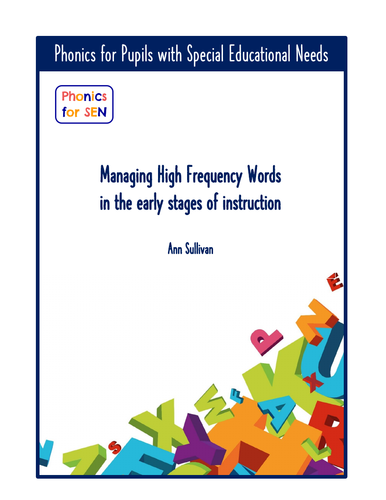

Managing HighFrequency Words in the Early Stages of Instruction
Phonically coded word list of the top 200 high frequency words
Word Cards
Nearly all words can be phonically coded and there are actually very few common exception or tricky words.
However, we do need to bear in mind that the very point about these words is that they are high in frequency and so are likely to appear in even simple text and pupils may encounter them when at a very early stage of learning to read and working through a phonics programme. These words are not tricky but are inconvenient. So, how do we work on these words?
The solution is that we need to take a gentler approach to these with a long-term view of the situation. The high frequency words are studied intensively when the child works on the appropriate focus sound as they work through the programme, but a scaffolded approach is taken to supporting children to read and spell high frequency words when they encounter them in the early stages. In this document there is a handy list of the top 200 decodable words coded and organised by main sound and their appearance in the teaching sequence of the Phonics for SEN programme.
The cards in this pack primarily help staff to support pupils to read and spell the words as they arise. Staff in schools have varying experiences, knowledge and understanding of phonics and the cards are intended to support them to better understand how the inconvenient words are put together.
There is information about:
. the number of sounds in the word and what they are,
. the sound spellings (graphemes) – indicated by a larger gap between them,
. why the word is inconvenient – how it fits into phonics progression,
. blending - colour coded sound spellings get darker as the pupil blends though the word.
The words selected are taken from the DfE’s document, The Framework for Reading – Teaching the foundations of reading July 2021, plus a few additions.
Although primarily designed to be a tool to support staff, the cards could be keep on hand and used with pupils to support the reading and spelling strategies above, as needed when reading or writing.
They are NOT intended to be used as flashcards or a display that encourages pupils to learn the words visually and remember them as whole words.
Something went wrong, please try again later.
Informative, thank you.
I am so grateful that you're prepared to hare such wonderful and relevant resources with your teacher community. Thank you
Brilliant resource.
Report this resourceto let us know if it violates our terms and conditions.
Our customer service team will review your report and will be in touch.